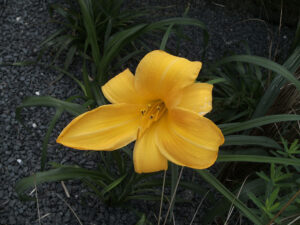WORKING WITH MASKS
First off, what is a layer mask?
Well, like wearing a mask on your face, layer masks are pretty much the same. They hide portions of a layer.
Quick Mask Mode
I am going to start with the difficult version of this. This has quite a few steps in it.
Open your photo mask in Photoshop.
Also open the image that you would like to mask.
On your mask image:
Select > All (from the top menu)
Edit > Copy
Select > Deselect
Go to your image that you want masked.
Select > Edit in Quick Mask Mode
There is also a Quick Mask shortcut button on your tools pallet.

Edit > Paste
This will turn portions of your image red. Don’t worry, your image isn’t actually altered, yet.
Select > Edit in Quick Mask Mode (again)
This will give you a selection that resembles the white portion of the mask.
Be sure to check a certain detail.
Is your mask Black with white shapes, or white with black shapes? This is important.
If your mask is white with black shapes:
Select > Inverse
Layer > Layer mask > Reveal Selection
If your mask is black with white shapes, you can skip the selection inverse.
And you are done. You now have a mask on your image.
You can also paint your own masks! You can use this to alter images to make them blend in with the background better. Let’s try it!
First thing is to decide what images you want to combine by using the mask.
These images came from my personal photography collection. I took these while living in Tallinn Estonia. Very pretty place, if you ever get a chance to visit.


Now place the flower image as a new layer on the snow image. (Just drag and drop the flower into the other image)
You should now have the flower on top of the snow background.
Ok now you will see a little icon at the bottom of your layer pallet. With your flower layer highlighted, click on that icon. This will add a layer mask to that layer.

There will be an attached white “layer” added to the layer itself. This will be the only thing you should be painting on.

Now grab your paintbrush tool and just using black, paint around the flower to get rid of the background. (this is the most tedious part)
The biggest advantage of using the layer mask instead of just the eraser, is that if you notice that you made a mistake, or changed your mind about an area, you can simply paint the area back on using white.
Now you should have something that looks like this:

You can now right click on the layer mask and “apply layer mask.”
Now for some fun stuff.
Click on the icon at the bottom one more time to add another mask to the layer.
This time we are going to make the flower just a little translucent.
Using the paintbrush with a gray color, paint a little bit inside the flower petals where it looks like you would be able to see through them just a little. It does not have to be perfect. We will fix that in just a minute.

Now just blur the layer mask. Filter > Blur > Gausian blur set to around 15 pixels.

Now you can see just a little bit through your flower.
If you like, you can now add a few layer styles and other details to make it all your own. Merge visible and you are finished! Easy, huh?

